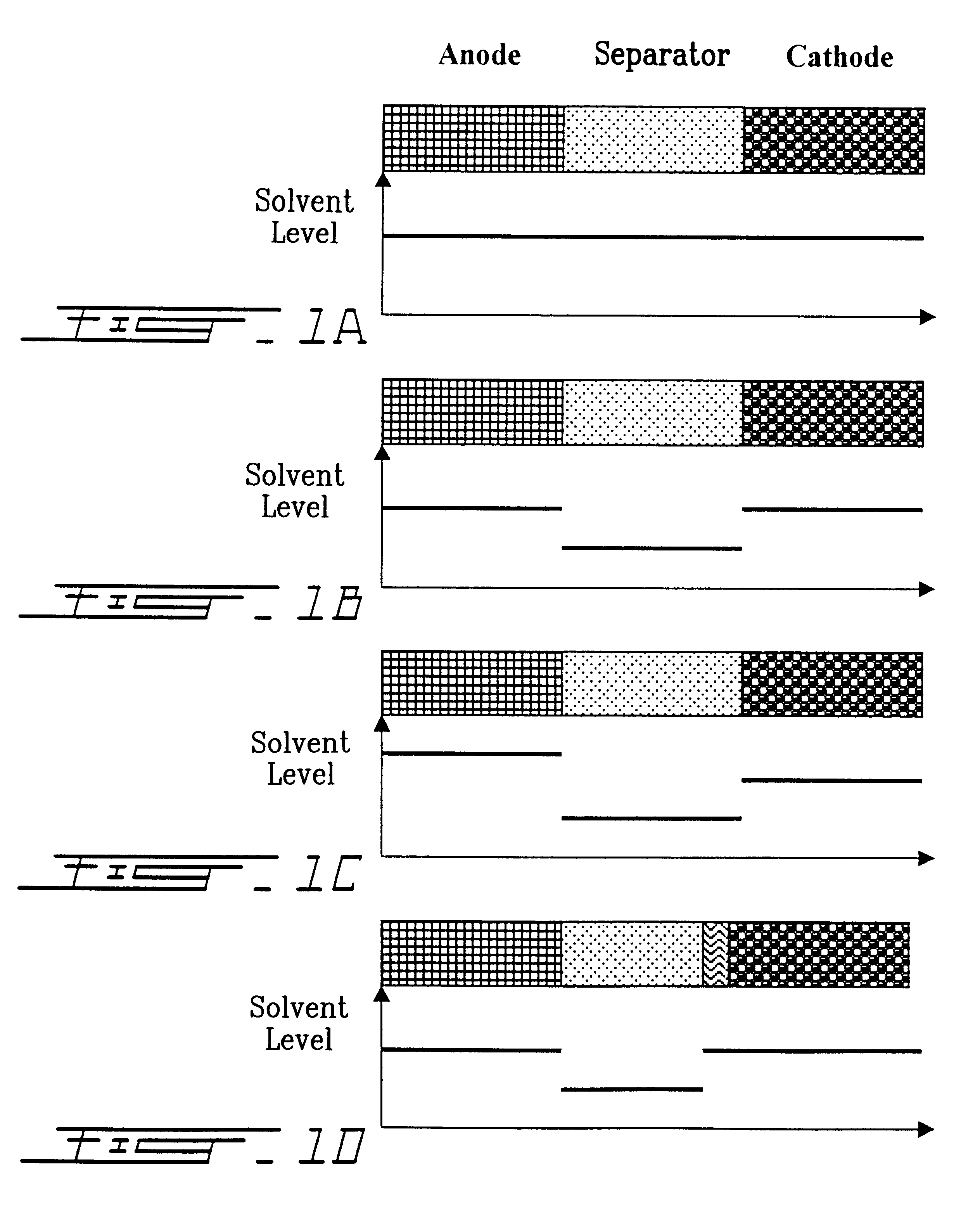Electrolytic composition with polymer base for electrochemical generator
a technology of electrochemical generator and composition, which is applied in the direction of non-aqueous electrolyte cells, cell components, sustainable manufacturing/processing, etc., can solve the problems of low ionic mobility of solid electrolytes, large loss of generator capacity, and difficult resorbing of composite electrodes
- Summary
- Abstract
- Description
- Claims
- Application Information
AI Technical Summary
Problems solved by technology
Method used
Image
Examples
embodiment 1
In a first embodiment, the electrolytic component consists of two polar matrices of different chemical nature, swollen at different rates by at least one polar aprotic solvent containing at least one alkali metal salt.
The first polymer matrix which mainly constitutes the separator consists of a polyether (polymer #1) in the form of a high molecular weight homo or copolymer, which is cross-linkable or non cross-linkable, or a low molecular weight cross-linkable homo or copolymer. The matrix may contain at least one cross-liking additive in order to increase the dimensional stability of the formed separator and especially help in limiting the rate of swelling. The cross-linking additive is selected from trimethylolpropane, trimethacrylate, polyethylene oxide diacrylate, polyethylene oxide dimethacrylate, glycerol triacrylate, glycerol trimethacrylate, pentaerythiol tetraacrylate, glycerol propoxylate (1PO / OH) triacrylate, dipentaerythiol penta / hexaacrylate and di(trimethylolpropane) t...
embodiment 2
The second embodiment of the electrolytic component is different from embodiment #1 only by the composition of the matrix constituting the separator, in that the polymer matrix of the latter may be formed of a network which is interpenetrated by the addition of a third cross-linkable polymer which is solvating or non-solvating or thus forms a semi-interpenetrated network by the addition of the third polymer. The third polymer is not necessarily a polyether and is used in a volume proportion lower than that of polymer #1.
In the present invention, it is preferred to use a polyether in the major part of the generator because of its electrochemical and technological advantages as conductive binder and as cross-linkable separator. Gels formed of non-solvating polymer are preferably used mainly in the composites and especially in the cathode where resistance to oxidation becomes critical and may limit the use of polyethers alone when the cathodes operate at voltage of recharge beyond 3.5 ...
embodiment 3
In a third embodiment the electrolytic component is identical to that of embodiment #1 except that the porosity which remains in the composite electrode(s) is compensated by a polyether matrix which is swollen by at least one aprotic solvent containing at least one alkali metal salt. In this case, the proportion of aprotic solvent is lower in the polyether of the separator than in the polyether which is present in the composite so as to optimize the diffusion of ions in the composite while minimizing the contact surface between the polyether and the active material of the cathode, for example in the case of 4 V cathodes.
PUM
| Property | Measurement | Unit |
|---|---|---|
| temperatures | aaaaa | aaaaa |
| temperatures | aaaaa | aaaaa |
| weight percent | aaaaa | aaaaa |
Abstract
Description
Claims
Application Information
 Login to View More
Login to View More - R&D
- Intellectual Property
- Life Sciences
- Materials
- Tech Scout
- Unparalleled Data Quality
- Higher Quality Content
- 60% Fewer Hallucinations
Browse by: Latest US Patents, China's latest patents, Technical Efficacy Thesaurus, Application Domain, Technology Topic, Popular Technical Reports.
© 2025 PatSnap. All rights reserved.Legal|Privacy policy|Modern Slavery Act Transparency Statement|Sitemap|About US| Contact US: help@patsnap.com



